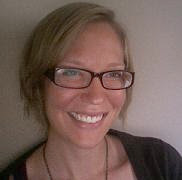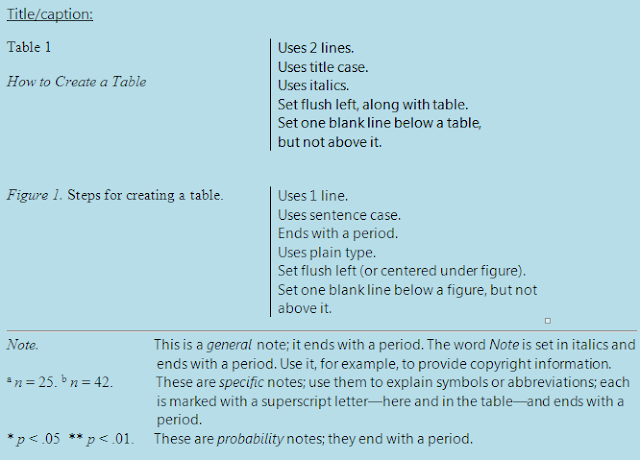Punish the Procrastinator! A Review of the Write or Die App
By Kayla Skarbakka and Nik Nadeau, Writing Consultants
You have a looming deadline and are just about to start that
paper when you notice the dust bunnies under your desk. A text from your
daughter. That new episode of Parks and
Recreation on Hulu.
Sound familiar? Oftentimes, “sitting down to write” means
“doing everything I can think of to avoid writing.” If you—like many of us in
the Writing Center—find yourself in that situation a bit too frequently, you
might want to check out Write or Die, a
free online application (also available for purchase on iPad or Desktop) that
helps writers combat procrastination.
According to Write or Die’s creator, the so-called “Dr.
Wicked,” the app uses negative reinforcement to get writers to put words on the
page. Using the app is simple: set yourself a time and word goal and get to
work. As long as you keep typing into the text box, you are in the clear.
Think twice, though, before pausing to read that new e-mail
or grab another cup of coffee. If you stop typing for more than a few seconds,
you face consequences ranging from a gentle pop-up reminder to keep writing
(Gentle Mode) to an unpleasant sound that persists until you continue typing
(Normal Mode) to self-erasing text (Kamikaze Mode). The final consequence
level, “Electric Shock Mode,” is, fortunately, not actually a usable option.
In the words of Dr. Wicked, “the idea is to instill in the
would-be writer… a fear of not writing” (“Write or Die,” 2013, para. 6), giving
writers real and immediate consequences for self-sabotaging behaviors.
Intrigued by this idea, writing tutors and professional procrastinators Kayla
and Nik decided to try the application to help them with their own writing
projects.
Kayla’s Take
After playing around with the various consequence options
available in the Write or Die app, I have determined that I am (a) a speedy
typer and (b) an awfully slow thinker.
I simply mean that as long as my goal was to get words—any
words—on the screen, then the “fear of not writing” was a fantastic motivator. Do
I want to hear crying babies, blaring car horns, or “Peanut Butter Jelly Time”?
No thank you.
There’s a lot to be said for focusing on quantity. Ten
minutes of madcap typing in the Write or Die app (much of it asides like “Oh
geez, that’s bad; obviously I will fix that later”), and I managed to work
through a plot problem in a story that has been nagging me – no lie – for 2
years.
However, I soon found
myself wanting to slow down and write a bit more thoughtfully. I wanted to be
picky and playful with language; I wanted to be accurate, deliberate, and
detailed. Turns out I can’t write in that way quickly enough for Dr. Wicked,
though, and let me tell you: it’s difficult to concentrate with “Never Gonna
Give You Up” blasting from your speakers every 15 seconds.
My take on Write or Die: fantastic for brainstorming, generating
ideas, and warming up those writing muscles. It might even be helpful for a
first draft if you’re battling writer’s block. But once you know what you want to say and are more
concerned with how you say it, you
might be ready to move to the word processor.

Nik’s Take
Unlike Kayla, my idea of “warming up” for writing is eating,
watching YouTube, or finding one more thing to clean with a Lysol wipe. I will
do ANYTHING to not write. And I find that the things I do write that I (and
sometimes other people) like are those things that I didn’t really care about.
Now let me explain: I care about my writing. Deeply.
But what I really need
more than to care about my writing is to NOT care. To further explain, let me
give an illustration:
So as you can see, where Kayla would prefer to avoid getting
her ears blasted by crying babies, car horns, and every possible song that should
never have been introduced to human culture, I WELCOME it. I need to be shoved
off a cliff to write consistently. And, well, if that’s the way it is, I’d
rather listen to “Never Gonna Give You Up” over and over again rather than, you
know, actually getting shoved off a cliff.
Editor's note: Other writing apps that aim to minimize distraction are Flowstate, Freedom, and WriteRoom. Let us know what you think of these apps. Do they work for you?
General Guidance on Data Displays
By Tim McIndoo, Dissertation Editor
According to APA style, a table
has a row–column structure; everything else is called a figure (chart, map, graph, photograph, or drawing). This post won't
discuss the creation of a figure—the possibilities are endless—except to say
that figures are not enclosed in a box (as they are in the APA Publication Manual). If you’ve not
created a table before, it may take a little practice.
Here’s guidance on the (a) keyboard steps to create a table, (b) the
opposite formatting of tables and figures, and (c) the APA and Walden
requirements.
A. Keyboard steps to create a table
In the Word toolbar, go to Table > Insert > Table > Table
size. Pick the number of columns and rows you think you’ll need. Make sure to
add one each for the headers of the table and the stub column (which lists the
individual items).
Under AutoFit behavior, try AutoFit to Contents. That way, your
table will automatically expand to fit whatever data you put in the various
cells. You can always change it later.
Under Table Style, try Table Normal. It’s standard, it’s simple,
it’s clean.
B. Formatting tables and figures (and the three forms of notes used at the end of a table). Note how tables and figures are formatted in opposite ways.
C. APA and Walden requirements
- All cells in a table, and callouts in a figure, use sentence case.
- APA style does not use boldface type or vertical lines in tables.
- Do not put a box around a figure.
- Make titles and captions concise, clear, and expressive. (APA 5.12 & 5.23)
- Do not split a table unless it is too large to fit on one entire page. It works best to start tables at the top of a page; that way, there will generally be enough space. It’s OK if the table appears on the page following its first mention.
- If a table is, indeed, too large for one page, then type (table continues) under the table, flush right. Repeat the column headings (not the table title) at the top of the new page.
- If a table or figure takes up 75% or more of a page, then set no text on that page.
- If needed, use a different point size (or font) for the text of the table or figure, but in any event, do not use smaller than 8-point type.
- For numerous examples of tables, see APA Publication Manual, pp. 129–150; for numerous examples of figures, see pp. 152–166. I would encourage studying them all closely. You can also see several examples on the Writing Center website.
 ----------------------------------------------------------------------------------------------------------
----------------------------------------------------------------------------------------------------------Tim McIndoo, who has been a dissertation editor since 2007, has more than 30 years of editorial experience in the fields of medicine, science and technology, fiction, and education. When it comes to APA style, he says, "I don't write the rules; I just help users follow them."
Publishing the Dissertation: Journal Article or Book?
After countless hours toiling over your dissertation, you’ve finally reached the finish line. Upon approval by your committee, your dissertation is officially ready for the next step. But what is that next step? Is it possible to expand your readership beyond those helpful committee members, to share your ideas with other scholars, to join in the academic conversation regarding your topic, and possibly even advance your career? The short answer: Yes. The somewhat less exciting and slightly longer answer: Still yes, though publishing your dissertation is competitive and difficult (but not impossible!). Let’s walk through some questions to consider as you begin seeking publication.
 |
| "Alternatives" (c) Daniel Oines (CC BY 2.0) |
Neither option is necessarily easier. Turning your dissertation into a book will still require quite a bit of editing. For example, in an academic book, detailed methodological descriptions are often moved to the appendix, if they are included at all.
That said, you can take solace in the fact that you are not the first person to have to make this decision. Even better, there’s a large body of literature devoted to helping students determine whether their dissertation is best suited to be a book, an article, or none of the above. Books that may be helpful for students struggling with this decision include From Dissertation to Book by William Germano; Revising Your Dissertation, edited by Beth Luey; and The Thesis and the Book: A Guide for First-Time Academic Authors. Who knows? The Walden Library might even have digital copies of these texts.
-------------------------------------------------------------------------------------------

In his role as consultant in the Walden Writing Center, Jonah Charney-Sirott aims to "provide the type of assistance that not only can fix a sentence, but make it shine."
Notes on Winter Commencement 2013
 |
| Writing Center Tutors at Commencement (Hillary, Rachel, Nik) |
I’ve worked for the Walden University Writing Center since
May 2010 but never attended a commencement ceremony. This past January I finally
did. I sat in the upper part of the auditorium, among the 4,000 or so other guests
from around the world. Even though the remarks by Dr. Heller and the
commencement address by Dr. Tererai Trent were moving, something else seemed
more profound.
Cheers and hoots echoed from the tiers of seats as graduates
marched onto the floor in cap and gown. A scream of “That’s my mom!” rang out
when an EdD doctoral student was hooded by her committee chair. Applause—and
pride—erupted in the people around me as a student’s name was spoken. And it
was catching. A woman in another row who didn’t even know the PhD student said,
“There you go, Dr. Tony!” In other words, what inspired me most was the friends
and family. The people who’d stood by the graduate through years of schooling,
who’d traveled thousands of miles to this very hotel, simply to watch several
seconds of glory on a stage.
 |
| Graduates file in (above); opening remarks (below) |
Of course, the individual accomplishment cannot be diminished. You have put in the time, the research, the reading of serpentine scholarly texts, the writing. Study these photos; they mark your end goal. And once you’re there, at the end, remember who it was who gave you those pep talks.
Colloquialisms Part II: Slang
By Nathan Sacks, Writing Consultant
Language is always evolving, and this is just as true of slang, a general term
for words and terminology that do not fit certain definitions of “standard
writing.” As with clichés (another category of colloquialisms that I focused on
in my previous post), slang is sometimes difficult for us tutors to diagnose in writing
because of constantly-shifting attitudes about what should and should not be considered
acceptable language. This is true of APA as well, which requires a clear,
direct style that allows few opportunities for creative expression through
slang. According to the APA handbook’s sixth edition, precision is “essential
in scientific writing; when you refer to a person or persons, choose words that
are accurate, clear, and free from bias” (p. 71).
What makes slang not part of these standards for objectivity
is that, by definition, only certain groups of people use certain types of
slang. For instance, today’s modern alphabet of smiley-face emoticons may be
common parlance among teenagers, but they make less sense to an older
individual like myself (though there will certainly be exceptions on both ends
of the age spectrum). Conversely, certain ethnic, racial, or gendered terms
that were common in past academic writing are no longer acceptable, because by
modern cultural standards those words are no longer sensitive or bias-free.
The central conceit of APA word choice is to strive for the
most clear, direct, formal language that can convey academic arguments to the
most amount of people. It is possible for this tendency to be self-defeating.
Some scientific papers are so overloaded with formalized academic jargon that
they are impossible to read or understand. Others so deliberately distance
themselves from any possibility of bias that this distance ends up diluting their
arguments. Earlier, I defined slang as
the term for whatever does not fit specific definitions of “standard writing.”
But even this platonic ideal of “standard academic writing” is problematic—who
should decide what words are and are not acceptable, as well as what and what
does not qualify as slang?
As we know, sometimes rules in language change significantly
over a small amount of time. For instance, consider the gradual acceptance of the
word alright in our modern English
lexicon. When I was younger, the word alright
was an unacceptable misspelling of all
right, which by rule was two words. However, as blogger Grammar Girl noted here,
some dictionaries and writing resources have come to tacitly accept alright as its own word with a separate,
distinct meaning. How did this happen? When enough people collectively
misspelled the word, the misspelling became a standard part of the modern
lexicon. What used to be incorrect spelling becomes slang, and by that same
process, what was once slang may someday become standard academic practice.
To that end, also consider the APA’s recent change over the
number of spaces between sentences. In the fifth edition, one space after a
period was standard; in the current edition, both one and two spaces are
acceptable. Was the APA just buckling to modern computer user trends, or were
they making an effort to be more inclusive and open to linguistic evolution?
Possibly, they were trying to do both. In any case, this proves that APA
language is a language like any other, not because of its strict rules and word
choice guidelines, but because of its capacity to grow, change, and reflect
current ideas in writing and thinking.
Subscribe to:
Comments
(
Atom
)









2 comments :
Post a Comment